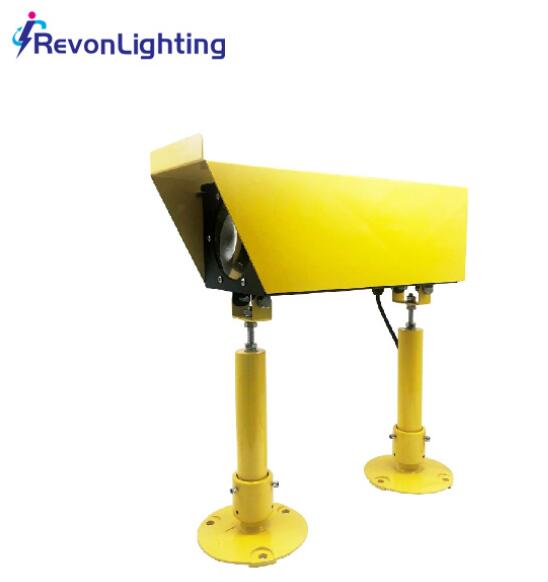The HAPI light, or Helicopter Approach Path Indicator light, is a crucial visual aid system used in helicopter operations to ensure safe and precise landings. This system is particularly vital in environments where helicopters frequently land and take off, such as hospitals, oil rigs, and remote landing zones. This article explores the significance, functionality, and various applications of the HAPI light, as well as its future potential in advancing helicopter safety and efficiency.
The Significance of HAPI Light
Enhancing Safety: The primary purpose of the HAPI light is to enhance the safety of helicopter landings. Helicopter pilots often have to navigate complex and confined spaces with minimal visual references. The HAPI light provides a clear and reliable guide, reducing the risk of accidents caused by incorrect approach angles.
Operational Efficiency: By offering precise visual cues, the HAPI light helps pilots execute accurate and efficient landings. This is particularly important in high-pressure situations such as emergency medical services, where time is critical.
Reducing Pilot Workload: During the approach and landing phases, helicopter pilots must process a large amount of information in a short period. The HAPI light simplifies this task by providing an easy-to-interpret visual guide, allowing pilots to concentrate on other critical aspects of the flight.
Versatility in Adverse Conditions: The HAPI light is especially valuable in poor weather conditions or low-light situations. The bright, color-coded lights are easily visible, providing consistent guidance regardless of external lighting conditions.
Functionality of the HAPI Light
The HAPI light system typically consists of a series of lights arranged either vertically or horizontally. These lights change color based on the helicopter's angle of approach. The standard color scheme includes red, amber, and green lights. When the helicopter is on the correct glide path, the pilot sees a green light. If the helicopter deviates from this path, the lights turn amber (slightly off-path) or red (significantly off-path).

The HAPI light operates on the same principle as the Precision Approach Path Indicator (PAPI) used for fixed-wing aircraft but is specifically tailored for the unique requirements of helicopter operations. Helicopters have the ability to hover and land vertically, necessitating a more flexible and responsive visual aid system.
Applications of the HAPI Light
Hospital Helipads: In medical emergencies, helicopters need to land quickly and safely on hospital helipads. The HAPI light provides crucial guidance to ensure that the approach is accurate, minimizing the risk of accidents during critical moments.
Offshore Platforms: Helicopters frequently transport personnel and equipment to offshore oil rigs. The HAPI light is essential in these environments, where space is limited and the landing surface is often surrounded by obstacles.
Remote Landing Zones: In military operations or search and rescue missions, helicopters may need to land in unprepared or temporary zones. Portable HAPI light systems can be quickly deployed to provide immediate visual guidance in these challenging conditions.
Urban Environments: Helicopters operating in urban areas face unique challenges, such as high buildings and restricted airspace. The HAPI light aids in navigating these complex environments, ensuring safe and precise landings.
Challenges and Maintenance of HAPI Light Systems
Despite their importance, HAPI light systems are not without challenges. Ensuring correct alignment and regular maintenance is crucial for their effectiveness. Misalignment or technical failures can lead to incorrect visual cues, potentially compromising safety.
Regular inspections and calibration are necessary to maintain the accuracy of HAPI lights. In addition, operators must be trained to recognize and respond to any issues that may arise. This includes understanding the limitations of the system and knowing how to adjust their approach if the HAPI lights are not functioning correctly.
Future Developments in HAPI Light Technology
As technology advances, the HAPI light
Augmented Reality Integration: Future HAPI light systems could be integrated with augmented reality (AR) technologies, providing pilots with a heads-up display (HUD) that overlays HAPI information directly onto their field of vision. This would further reduce the need for pilots to shift their focus, enhancing situational awareness and safety.
| HAPI light | Helicopter Approach Path Indicator light |
| 12 | 13 |
Autonomous Monitoring and Adjustment: Incorporating sensors and artificial intelligence (AI) could enable HAPI light systems to autonomously monitor and adjust their alignment in real-time. This would ensure optimal functionality even in dynamic environments, reducing the need for manual maintenance and calibration.
Enhanced Portability and Durability: Advances in materials and battery technology could lead to more portable and durable HAPI light systems, suitable for even the most remote and challenging landing zones. These improvements would extend the reach and applicability of HAPI lights, further enhancing safety in diverse helicopter operations.
Conclusion
The HAPI light is a vital component in ensuring the safety and efficiency of helicopter operations. By providing clear and reliable visual guidance, it significantly reduces the risk of accidents, enhances operational efficiency, and alleviates pilot workload. As technology continues to evolve, the future holds exciting possibilities for further enhancing the capabilities of HAPI light systems. Through continued innovation and development, the HAPI light will remain an indispensable tool in the aviation industry, ensuring the safe and effective operation of helicopters in a variety of challenging environments.